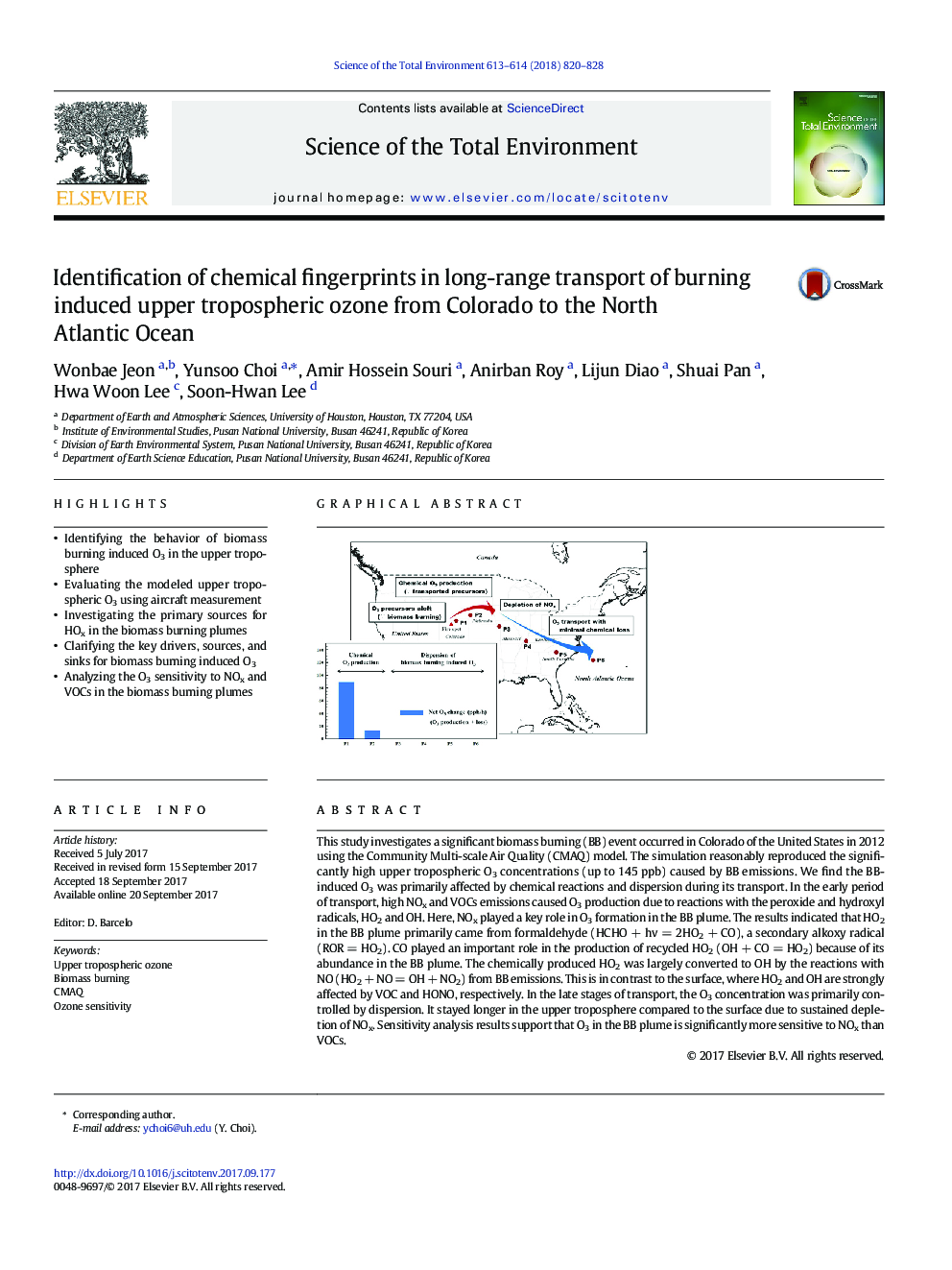| کد مقاله | کد نشریه | سال انتشار | مقاله انگلیسی | نسخه تمام متن |
|---|---|---|---|---|
| 5750144 | 1619690 | 2018 | 9 صفحه PDF | دانلود رایگان |
- Identifying the behavior of biomass burning induced O3 in the upper troposphere
- Evaluating the modeled upper tropospheric O3 using aircraft measurement
- Investigating the primary sources for HOx in the biomass burning plumes
- Clarifying the key drivers, sources, and sinks for biomass burning induced O3
- Analyzing the O3 sensitivity to NOx and VOCs in the biomass burning plumes
This study investigates a significant biomass burning (BB) event occurred in Colorado of the United States in 2012 using the Community Multi-scale Air Quality (CMAQ) model. The simulation reasonably reproduced the significantly high upper tropospheric O3 concentrations (up to 145 ppb) caused by BB emissions. We find the BB-induced O3 was primarily affected by chemical reactions and dispersion during its transport. In the early period of transport, high NOx and VOCs emissions caused O3 production due to reactions with the peroxide and hydroxyl radicals, HO2 and OH. Here, NOx played a key role in O3 formation in the BB plume. The results indicated that HO2 in the BB plume primarily came from formaldehyde (HCHO + hv = 2HO2 + CO), a secondary alkoxy radical (ROR = HO2). CO played an important role in the production of recycled HO2 (OH + CO = HO2) because of its abundance in the BB plume. The chemically produced HO2 was largely converted to OH by the reactions with NO (HO2 + NO = OH + NO2) from BB emissions. This is in contrast to the surface, where HO2 and OH are strongly affected by VOC and HONO, respectively. In the late stages of transport, the O3 concentration was primarily controlled by dispersion. It stayed longer in the upper troposphere compared to the surface due to sustained depletion of NOx. Sensitivity analysis results support that O3 in the BB plume is significantly more sensitive to NOx than VOCs.
212
Journal: Science of The Total Environment - Volumes 613â614, 1 February 2018, Pages 820-828
